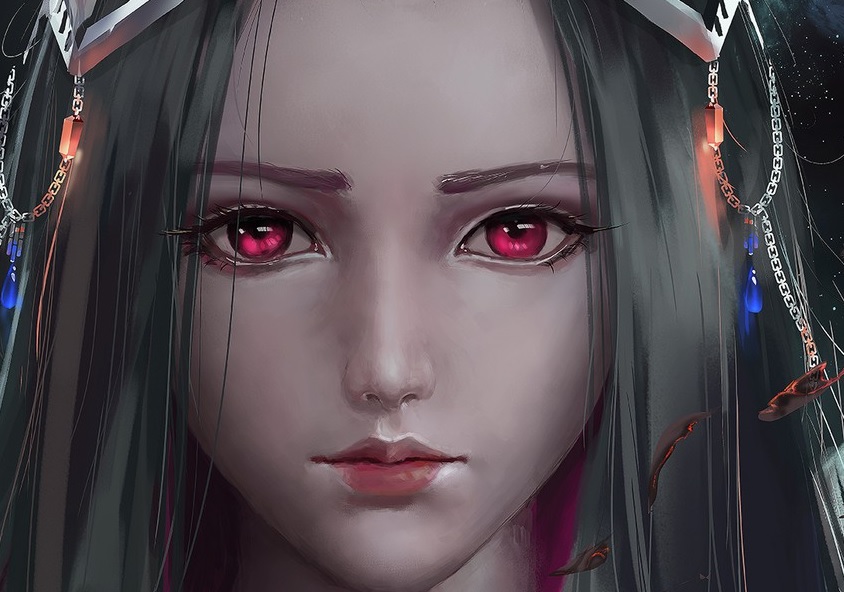Difference between revisions of "Infravision"
Tao alexis (talk | contribs) |
|||
| (7 intermediate revisions by one other user not shown) | |||
| Line 1: | Line 1: | ||
| − | '''Infravision''' | + | [[File:Infravision.jpg|right|560px|thumb]] |
| + | '''Infravision''' describes a character or creature's extraordinary ability to perceive objects clearly within a radius of 60 feet, regardless of the ambient level of [[Illumination|illumination]]. This unique visual capability stems from the peculiar anatomy of their eyes, allowing them to detect thermal patterns that are further enhanced by the minimal available light. | ||
| − | + | This works in tandem with visible light, so that unlike rules that have been written in AD&D, infravision is not spoiled by the addition of other light. This means that pitch darkness does not exist for these characters or monsters. They will always be able to see normally to 60 ft., and even farther if a light source is present. An appearance of red in the seer's eyes is present, but difficult to distinguish under the conditions in which infravision is used. | |
| − | + | Rules for how infravision and other light combine to determine visibility can be found on the light [[Illumination#Range Adjustments|range adjustment table]]. | |
| − | |||
| − | + | == Cultural Effects == | |
| + | The absence of true darkness would have significant effects on demi-human society and its norms. Where doesn't provide natural privacy, cultural norms around personal space, modesty, and intimacy might be quite different. People might develop alternative methods to maintain privacy, such as special clothing or designated private areas. Individuals might develop hand-signals, as two awake people in a room full of sleeping people would be able to see one another. | ||
| − | + | With a lesser nighttime darkness, the normal pattern of vendors closing at sunset could be suspended, allowing a late-night set of habits not generally recognisable with medieval practices. Festivals and celebrations might be centered around the interplay of light and shadow, offering unique cultural events and experiences that appeal to both natural light and the individual's infrared capacity. | |
| − | |||
| − | |||
| + | See also,<br> | ||
| + | [[Darkness (spell)]]<br> | ||
| + | [[Darkness, 15 ft. radius (spell)]]<br> | ||
| + | [[The Adventure]]<br> | ||
| + | [[Ultravision]] | ||
| − | + | [[Category: reviewed]] | |
| − | |||
| − | [[Category: | ||
Latest revision as of 23:32, 6 October 2023
Infravision describes a character or creature's extraordinary ability to perceive objects clearly within a radius of 60 feet, regardless of the ambient level of illumination. This unique visual capability stems from the peculiar anatomy of their eyes, allowing them to detect thermal patterns that are further enhanced by the minimal available light.
This works in tandem with visible light, so that unlike rules that have been written in AD&D, infravision is not spoiled by the addition of other light. This means that pitch darkness does not exist for these characters or monsters. They will always be able to see normally to 60 ft., and even farther if a light source is present. An appearance of red in the seer's eyes is present, but difficult to distinguish under the conditions in which infravision is used.
Rules for how infravision and other light combine to determine visibility can be found on the light range adjustment table.
Cultural Effects
The absence of true darkness would have significant effects on demi-human society and its norms. Where doesn't provide natural privacy, cultural norms around personal space, modesty, and intimacy might be quite different. People might develop alternative methods to maintain privacy, such as special clothing or designated private areas. Individuals might develop hand-signals, as two awake people in a room full of sleeping people would be able to see one another.
With a lesser nighttime darkness, the normal pattern of vendors closing at sunset could be suspended, allowing a late-night set of habits not generally recognisable with medieval practices. Festivals and celebrations might be centered around the interplay of light and shadow, offering unique cultural events and experiences that appeal to both natural light and the individual's infrared capacity.
See also,
Darkness (spell)
Darkness, 15 ft. radius (spell)
The Adventure
Ultravision
